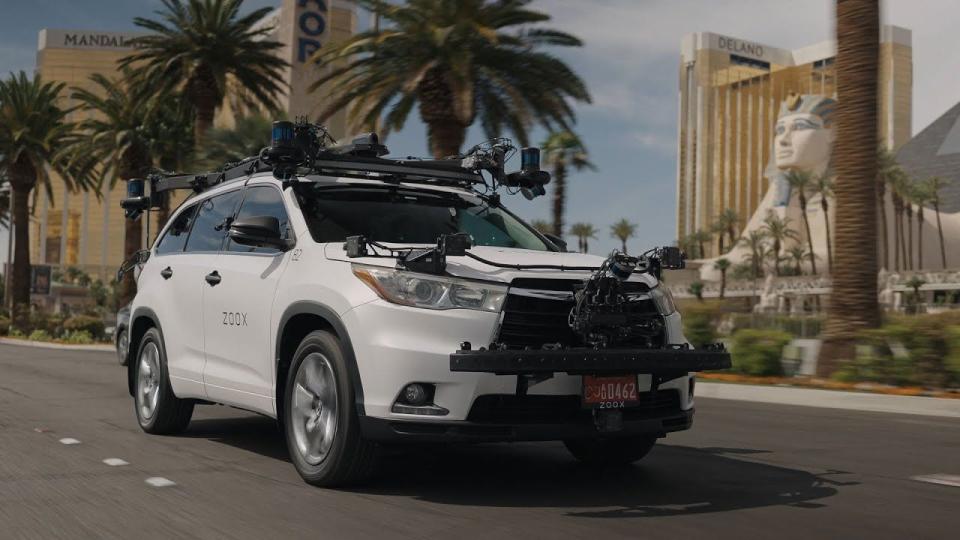How NHTSA’s Playing Both Sides of the Automatic Emergency Brake Issue

The National Highway Traffic Safety Administration in April said it will require all new passenger vehicles be equipped with automatic emergency braking systems beginning in model year 2030.
The system should apply the brakes automatically up to 90 mph when a collision with a lead vehicle is imminent, and up to 45 mph when a pedestrian is detected.
Separately, NHTSA in May said it is investigating instances in which autonomous vehicles caused accidents due to “unexpected braking,” which seems to run at cross purposes to the April ruling.
In April, the National Highway Traffic Safety Administration (NHTSA) issued a new ruling requiring another new safety technology on passenger vehicles by the beginning of the 2030 model year. In May, it announced an investigation of the Amazon’s Zoox automated driving system after two traffic accidents caused injuries.
These two actions have nothing to do with each other—except for braking.
Federal Motor Vehicle Safety Standard Number 127, mandating automatic emergency braking (AEB) on every passenger vehicle sold in the United States beginning in September 2029, “will save at least 360 lives a year and prevent at least 24,000 injuries annually,” reads NHTSA’s April 29 release on the new requirement.
On May 10, NHTSA’s Office of Defects Investigation announced in a release it had been notified about two incidents in which Toyota Highlander test vehicles equipped with the Zoox automated driving system (ADS) “unexpectedly braked suddenly, leading to rear-end collisions…Each incident resulted in a motorcyclist that was following a Zoox vehicle colliding into the Zoox vehicle.”
NHTSA’s investigation of the Zoox accidents for “unexpected braking” raises the question of how NHTSA could issue its 2029 AEB requirement one month earlier.
Is NHTSA’s safety rule even necessary? AEB first made its way into luxury brands at least a decade ago, and “pretty much 100% of cars right now have AEB, which is ineffective,” says Sam Abuelsamid, Guidehouse Insights research analyst. “The simple camera systems are not going to do it,” he says of the 2029 NHTSA standards.

But Zoox’s AEB—as part of its fully autonomous system for its electric robotaxis—does have the sophistication required in the ’29 standard, he said.
Contacted for comment, a Zoox spokesperson responded with this statement via email: “Our team is currently reviewing the request for information as part of NHTSA’s Preliminary Evaluation (PE). We do not have additional details to share at this time. Transparency and collaboration with regulators is of the utmost importance, and we remain committed to working closely with NHTSA to answer their questions.”
NHTSA also responded to a request for an interview via email. “NHTSA generally does not comment on open investigations, so we would respectfully decline your interview offer,” the email said.
Current AEB systems are only good for detecting an emergency braking situation up to 25 mph, and then only in broad daylight, Abuelsamid says. To meet the late ’29 standards, vehicles will need active sensors as well as high-definition radar and LIDAR for better resolution in order to see in the dark and in rainy or foggy conditions. As per NHTSA:
The new standard requires all cars be able to stop and avoid contact with a vehicle in front of them up to 62 miles per hour and that the systems must detect pedestrians in both daylight and darkness. In addition, the standard requires that the system apply the brakes automatically up to 90 mph when a collision with a lead vehicle is imminent, and up to 45 mph when a pedestrian is detected.
But wait, shouldn’t a fully autonomous vehicle have all that and more? They do, and in fact Zoox’s flaw in its two accidents being investigated by NHTSA is that its autonomous systems drive with the virtual left foot always covering the virtual brake pedal.
For years, skeptics have warned that no matter how sophisticated autonomous vehicles get, they will not be able to decide what to hit when faced with a solid object in its path and in front of its escape route at the same time.
The solution, so far, is to program autonomous vehicles so they are not confronted with such a decision, because there is a high probability the vehicle will stop in time if given proper information for what’s ahead. No problem with that so long as the autonomous vehicle behind your driverless car is programmed the same way … along with any vehicle(s) following it.
The same, therefore, holds for AEB alone. Consider that the average age of passenger cars and light trucks on American roads has just edged up to 12.6 years, according to a report by S&P Global Mobility released Wednesday. That means it will be 2042 before the propensity of vehicles on the road have the sophisticated AEB systems that can better anticipate the sudden braking of the vehicles ahead.
The hope among automakers, regulators and local governments now dealing with rising traffic fatalities is that AEB and other automated systems will combine into higher levels of autonomous driving, first with the goal of “zero fatalities” from accidents, and ultimately, “zero collisions.”
The reality might just be that, for years, autonomous systems will significantly reduce fatalities without bringing them down to zero.
Consider, for example, airbags, the safety device first mandated with the goal of saving drivers and passengers who refuse to use their seatbelts. When combined with states’ seatbelt use mandates, fatalities have come down. But now, a quarter-century after airbags first started appearing in passenger vehicles en mass, NTSA’s website warns to this day that “millions of defective (Takata) airbags still need repair.”

 Yahoo Autos
Yahoo Autos 